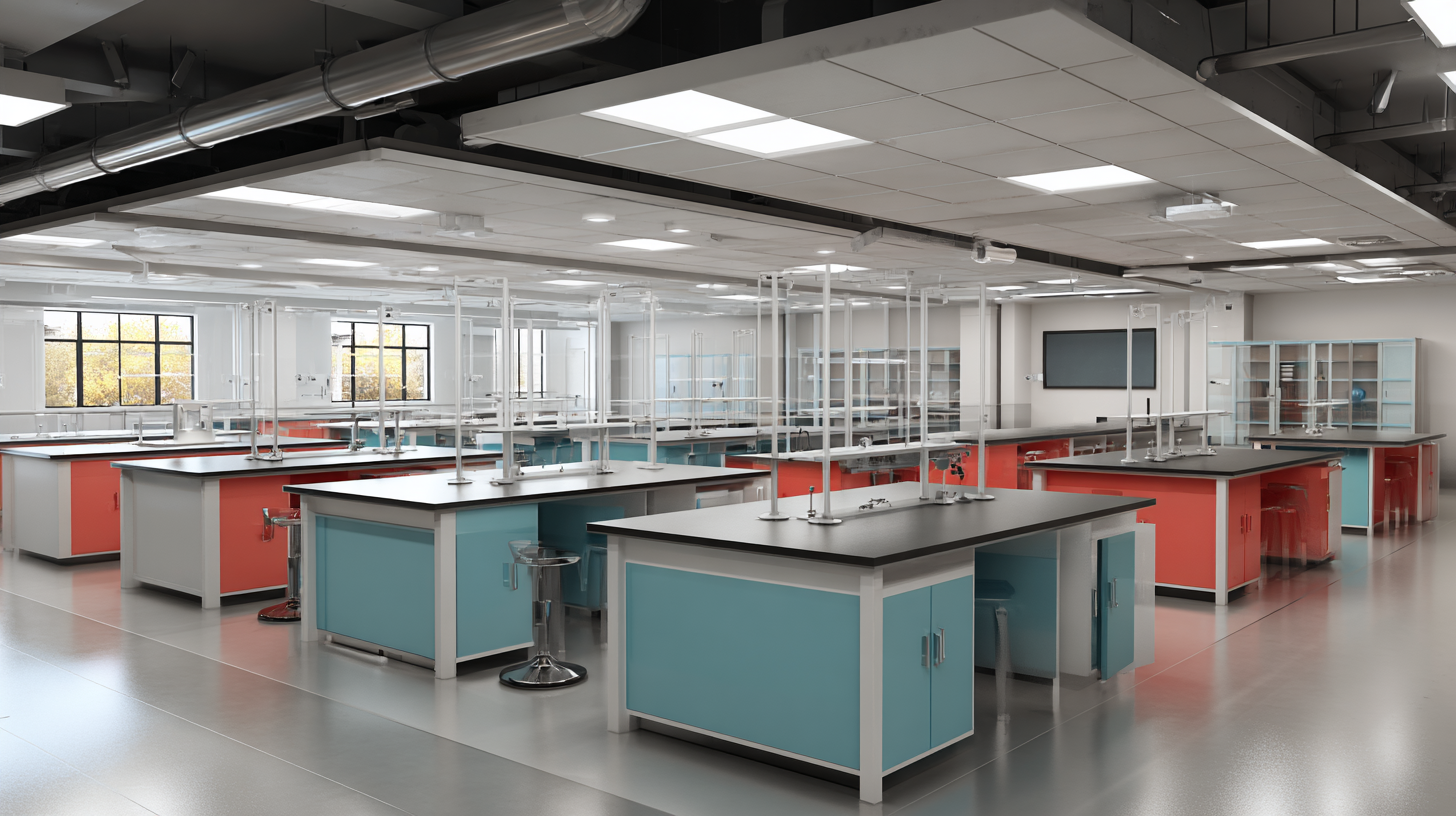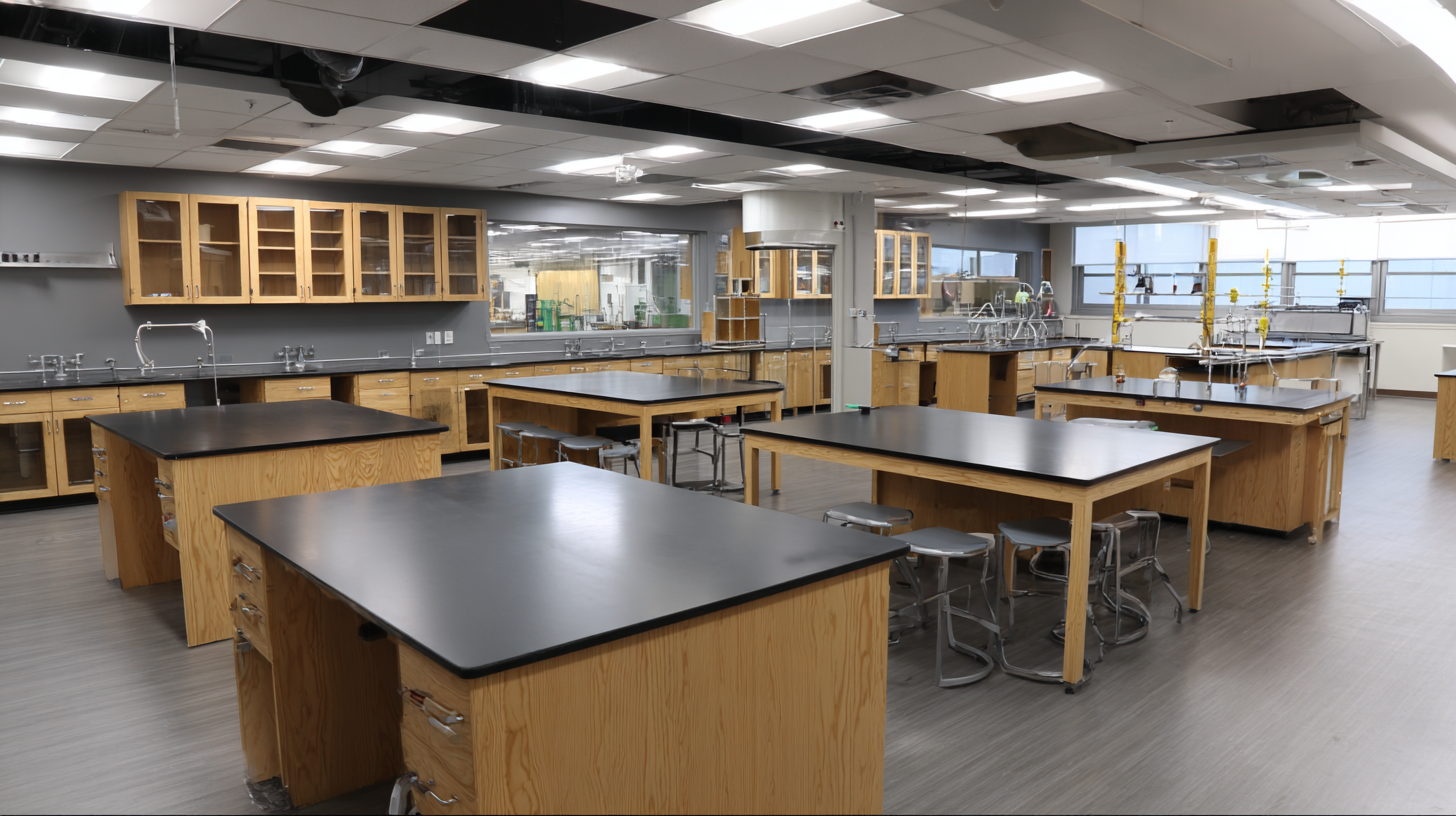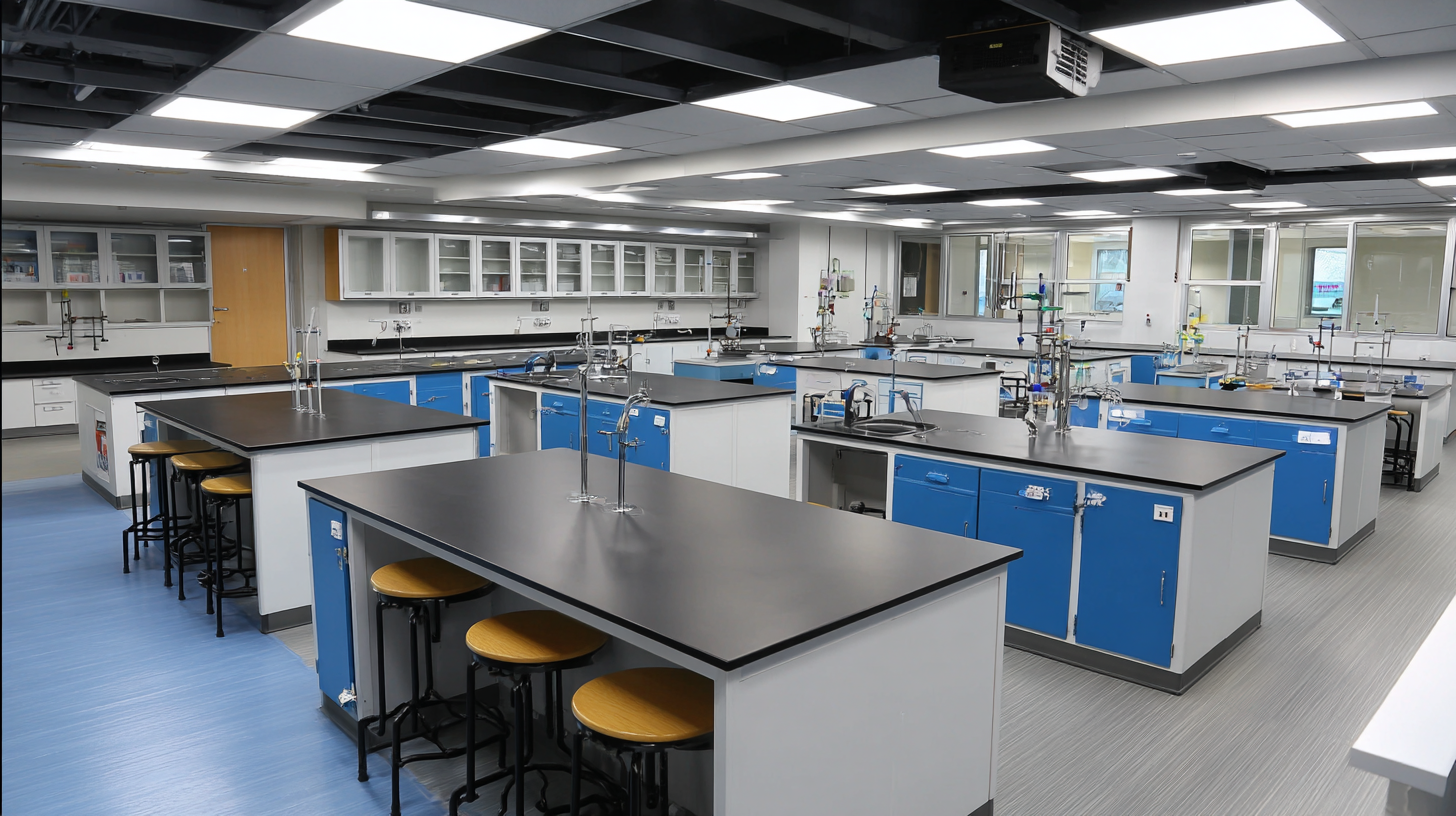Choosing the right School Lab Furniture is crucial not only for promoting student exploration but also for ensuring safety in educational environments. According to a recent report by the National Education Association, over 80% of educators believe that well-designed lab spaces enhance student engagement and learning outcomes.
 Furthermore, the importance of durable and reliable furniture cannot be overstated; studies indicate that misunderstandings regarding maintenance can lead to increased repair costs—estimated to rise by 20% in poorly equipped labs. Investing in quality lab furniture with strong after-sales support can significantly lower these expenses while fostering an innovative learning atmosphere.
This guide aims to provide insights into selecting the best school lab furniture that aligns with educational goals and budget constraints, providing a solid foundation for student inquiry.
Furthermore, the importance of durable and reliable furniture cannot be overstated; studies indicate that misunderstandings regarding maintenance can lead to increased repair costs—estimated to rise by 20% in poorly equipped labs. Investing in quality lab furniture with strong after-sales support can significantly lower these expenses while fostering an innovative learning atmosphere.
This guide aims to provide insights into selecting the best school lab furniture that aligns with educational goals and budget constraints, providing a solid foundation for student inquiry.
Designing flexible lab spaces is crucial in promoting safety and enhancing student engagement in educational settings. A well-thought-out lab environment allows students to explore and experiment freely while minimizing potential hazards. To achieve this, it’s essential to consider adaptable furniture that can be easily rearranged for various activities. Tables on wheels or modular seating can foster collaboration and create an interactive learning atmosphere.

When planning lab layouts, prioritize safety by incorporating features such as rounded edges on furniture and non-slip flooring. Clear pathways should be maintained to ensure that students can move swiftly in case of emergencies. Additionally, having dedicated areas for specific tasks can help in managing potential risks. Tips for ensuring safety include establishing clear protocols for lab usage and conducting regular safety drills. Engaging students in discussions about safety practices can further reinforce these important concepts.
Additionally, consider incorporating technology into your lab designs. Interactive smart boards and charging stations can make labs more engaging, encouraging students to participate actively. Tips for creating an engaging space include using vibrant colors to stimulate creativity and integrating natural light to enhance focus. By prioritizing these elements, educational institutions can create a lab environment that not only prioritizes safety but also inspires a passion for learning among students.
When selecting school lab furniture, one of the most critical factors to consider is material durability and maintenance. Labs are often bustling environments filled with active students and experiments that can lead to spills, stains, and wear over time. Choosing furniture made from robust materials can significantly enhance safety and longevity, ensuring that the investment is worthwhile. High-density polyethylene, stainless steel, and laminates designed for heavy use are excellent options that resist corrosion and damage, making them ideal for educational settings.
Moreover, maintenance plays a crucial role in sustaining the functionality and appearance of lab furniture. The right materials can simplify cleaning processes, preventing the accumulation of harmful bacteria and ensuring a safe learning environment. For instance, non-porous surfaces that are easy to wipe down are essential for keeping labs hygienic, especially amidst growing concerns about health and safety in schools. Thus, emphasizing material durability and ease of maintenance not only enhances the student experience but also secures their safety, allowing educators to focus on cultivating a creative and explorative learning atmosphere.
Innovative lab furniture trends are transforming educational environments, fostering collaboration and enhancing student engagement in science exploration. One of the most noteworthy trends is the integration of flexible furniture designs that can be easily reconfigured to support various group sizes and projects. This adaptability not only promotes teamwork but also allows educators to facilitate lessons more efficiently, accommodating hands-on activities and experiments in a dynamic setting.
Another emerging trend is the use of technology-infused furniture, which integrates charging stations and smart surfaces to support digital learning. Desks equipped with outlets and wire management solutions keep technology within reach, ensuring students can seamlessly transition between analog and digital tasks. Additionally, collaborative workstations that support group discussions and brainstorming sessions are becoming essential for cultivating a culture of innovation and creativity. These furniture advancements not only prioritize student comfort and safety but also empower students to actively participate in their learning process, ultimately leading to better outcomes in scientific literacy and problem-solving skills.

When investing in school lab furniture, budget is often a primary concern for many educational institutions. Research shows that well-designed lab environments can enhance student engagement and safety, making it essential to balance cost with quality. Schools can utilize up to 20% of their infrastructure budget on laboratory fittings, highlighting the significance of thoughtful spending.
**Tip:** Prioritize modular and multipurpose furniture that can adapt to various experimental setups. This flexibility not only saves money but can also extend the lifespan of the furniture.
Furthermore, consider suppliers that offer a warranty or maintenance services. According to the latest industry reports, schools that invest in durable and safe lab furniture report a 30% decrease in replacement costs over five years compared to those that compromise on quality. Long-term investments yield significant savings, ensuring that funds can be directed toward educational resources rather than frequent replacements.
**Tip:** Explore funding options or grants aimed at educational improvements to alleviate upfront costs. This approach can facilitate a balance between quality and budget, ultimately enhancing the educational experience.
When selecting school lab furniture, ergonomics plays a vital role in fostering an environment that promotes both health and productivity. Proper ergonomic design can significantly reduce the risk of strain and injury among students, allowing them to focus on exploration and experimentation without the distraction of discomfort. Features such as adjustable chairs, height-adjustable tables, and adequate workspace dimensions are crucial in accommodating diverse body types and preferences, ensuring that every student can work comfortably.
In addition to physical comfort, ergonomically designed lab furniture can enhance learning outcomes. When students are seated in a well-aligned position, their concentration and engagement levels increase. A productive lab setting encourages collaboration and active participation, which are essential for hands-on learning experiences. Investing in high-quality lab furniture that prioritizes ergonomics not only enhances student well-being but also sets the stage for inventive thinking and problem-solving, crucial skills for their academic journey.
